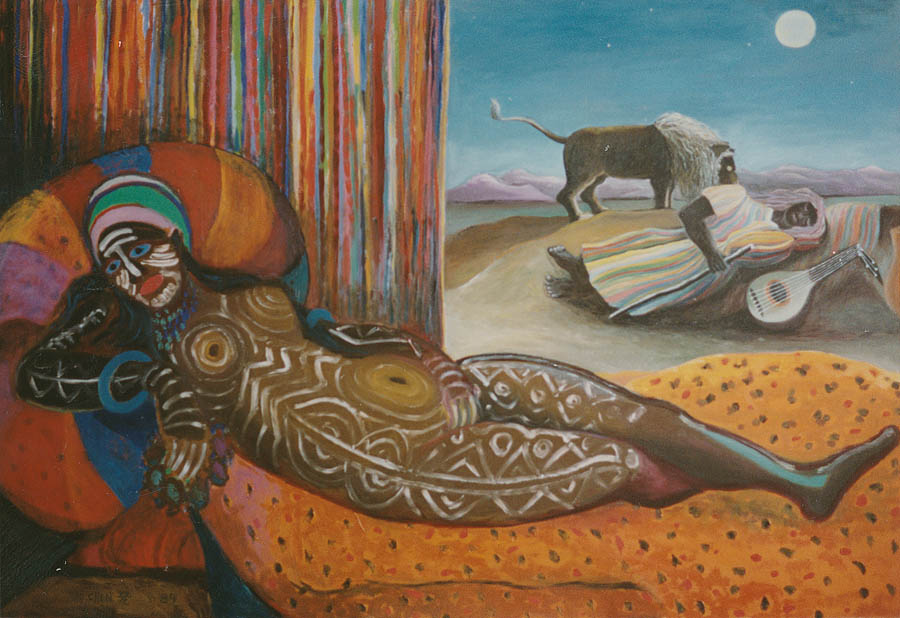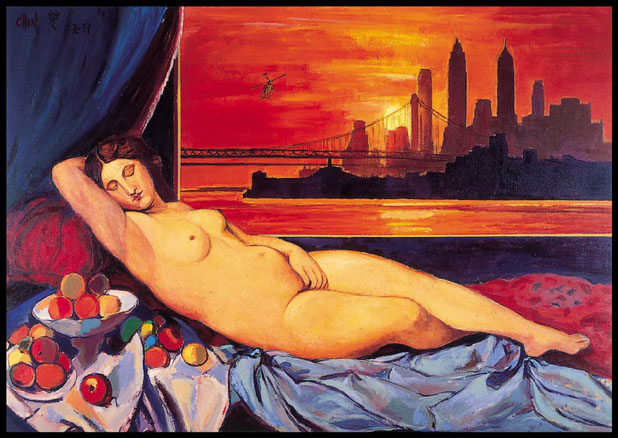
Venus and Shogun#78009 50″ X 72″ ac
Titian’s (1488-1576) Venus is a lovelier woman than Giorgione’s (1477-1510) painted 30 years earlier. Giorgione was Titian’s master, and when he limned the first full-length nude to appear in Venetian paintings, this set juices running in Titian’s veins that eventually accounted for no fewer than a dozen reclining nudes. In Titian’s original a shapely courtesan posed for the body, but the Duchess of Urbino posed for the face. A modern scholar making a detailed study of the iconography of the original has established affinities with Eleanora gonzaga, the duchess. A painting of a villa interior showing a servant helping a lady remove clothes from a chest occupied the space where Chen has placed the Japanese figures. When Titian painted versions of his reclining nudes he changed surroundings and backgrounds for each, while maintaining the basic female figure. So Chen’s adaptations and interpretations follow a 450-year precedent. The three leering kabuki figures which Chen uses suggest a story from the Jewish Apocrypha. Three elders spied on Susannah, the wife of Joiachim, and accused her of adultery, a capital offense. Her advocate proved her innocent and turned the tables on her accusers, who were put to death instead. In the Catholic religion Susannah became the patron saint who saves from infamy and reproach. Is this picture a warning against censors who object to the depiction of natural beauty? The juxtapositioning can also suggest the 19th century shoguns who wanted to open Japan to all desirable things from the West. The still life is purely a Chen addition suggesting refreshing good fruit.
– Lawrance Jeppson |
Venus and Shogun

African Venus
2015 年 8 月 4 日

